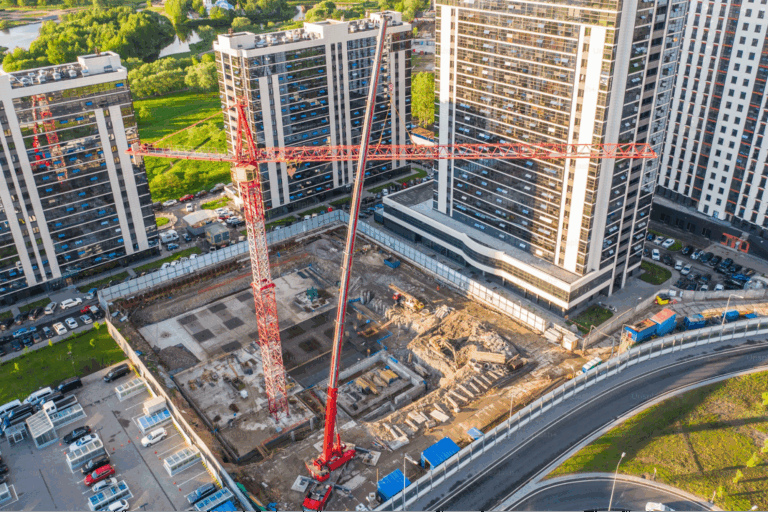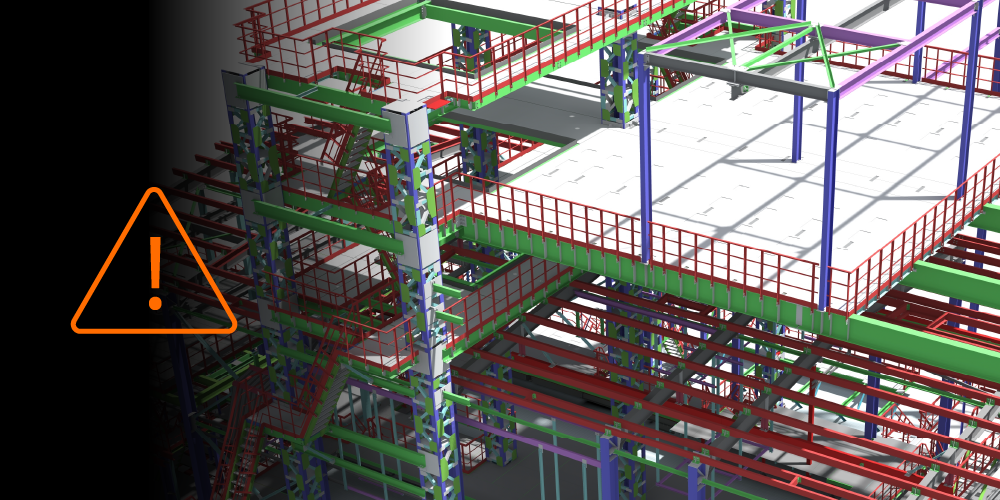Related Articles
— 7 min read
Understanding the Construction Contracts Act: What Builders and Contractors Need to Know

Last Updated Sep 29, 2025

Josh Krissansen
47 articles
Josh Krissansen is a freelance writer with two years of experience contributing to Procore's educational library. He specialises in transforming complex construction concepts into clear, actionable insights for professionals in the industry.
Last Updated Sep 29, 2025

The Construction Contracts Act is one of the most important tools for managing payment risk in New Zealand construction.
It sets out the legal rights and responsibilities for submitting payment claims, resolving disputes, and handling retention money, especially on commercial projects where cash flow and compliance are on the line.
But understanding the Act’s practical application is just as important as knowing what it says on paper.
This guide explains how the Construction Contracts Act works, what’s changed with the latest amendments, and what contractors, subcontractors, and consultants need to do to stay compliant and get paid on time.
Table of contents
Key Elements of the New Zealand Construction Contracts Act
The Construction Contracts Act 2002 provides a legal framework that supports fair payment practices and fast dispute resolution across New Zealand’s construction sector. It aims to reduce insolvency risk by protecting the payment rights of contractors, subcontractors, and suppliers.
The Act covers most construction work in New Zealand and includes key provisions covering progress payment claims, adjudication, and retention money. A 2023 amendment introduced tighter rules for managing retention money under commercial contracts—a major shift in how performance security is handled.
Scope of the Act:
- Covers commercial and most residential construction projects
- Applies to contractors, subcontractors, consultants, engineers, and clients
- Excludes employment agreements and homeowner-led residential work
Core Protections and Payment Rights
The Act gives contractors and subcontractors legal tools to secure timely payment and resolve disputes efficiently.
- Progress payments: Establishes a default payment system if the contract does not specify terms
- Written payment reasons: Requires clients to provide written reasons within 20 working days if full payment is withheld
- Right to suspend work: Contractors can suspend work if payment is not made as required.
- Ban on pay-when-paid clauses: Ensures subcontractors are not penalised for upstream payment delays
- Fast-track adjudication: Allows for quick dispute resolution without going through the courts
- Enforceable outcomes: Adjudicator decisions can be enforced in the District Court.
Retention Money Protections
Since October 5, 2023, The Retention Money Amendment Act 2023 states that head contractors must hold retention money in a separate trust account under strict recordkeeping requirements.
Key requirements in the 2023 amendment:
- Applies to commercial contracts only (not homeowner residential projects)
- Funds must be held on trust and not mixed with operating accounts
- Dedicated bank accounts and auditable records are mandatory
- Non-compliance penalties apply, including fines and reputational risk.
Who Can Make a Claim?
Going beyond contractors and subcontractors, the Construction Contracts Act 2002 allows a broad range of parties involved in construction projects to make payment claims or initiate dispute resolution.
Eligible parties covered under the Act also include:
- Head contractors and subcontractors: Primary and lower-tier contractors engaged under a valid contract
- Suppliers: Parties supplying materials, labour, or equipment
- Consultants: Engineers, architects, and design professionals operating under contract
- Project managers and quantity surveyors: Professionals with defined contractual obligations
- Owner-developers: In specific cases involving payment disputes or performance bonds
Exclusions and Limitations Under the Act
Not all working relationships fall under the scope of the Act, which explicitly excludes two types of work from eligibility:
- Employment contracts: The Act excludes any relationship governed by the Employment Relations Act 2000
- Homeowner-led residential work: Typically excluded from the retention money protections introduced in the 2023 amendment
What Work Can be Claimed?
The Construction Contracts Act 2002 defines construction work broadly, allowing claims across various services and deliverables. This ensures that both physical work and professional services tied to a construction contract are covered.
Claimable work:
- Construction and site development: Includes building works, earthworks, and structural activity
- Engineering and design: Services performed under contract by architects, engineers, or consultants
- Installations: Installation of systems, fixtures, or fittings as part of a construction project
- Supply of materials or equipment: Includes plant hire, prefabricated components, and raw materials
- Labour or trade services: Any labour provided under contract that is directly related to construction
Non-claimable work:
- Routine maintenance: Ongoing servicing or upkeep work
- Mining operations: Activities related to mineral extraction
- Oil and gas drilling: Includes exploration and production of petroleum resources
Payment Timelines and Deadlines
The CCA provides clear rules for when payment claims must be submitted and how quickly they must be processed.
Unless otherwise agreed in writing, the default entitlement is:
- Monthly progress claims covering completed work or supplied materials
- Payment due within 20 working days of receiving a valid claim
Once a payment claim has been received, and if the full claimed amount is not paid, the client or head contractor must respond in writing, providing:
- Written reasons: A payment schedule must explain the reasons for non-payment or partial payment.
- Deadline: The schedule must be issued within the same 20-working-day payment window.
If a payment schedule is not issued, the full amount becomes legally payable.
The Payment Claim Process
The CCA sets out a step-by-step process for submitting and managing payment claims
Each action must be completed correctly and within the required timeframe to preserve your right to suspend work or pursue adjudication.
Here’s how to follow the process:
Step 1: Prepare the Payment Claim
A valid payment claim must meet all legal and contractual requirements. It must:
- Be in writing.
- Clearly identify the work completed or materials supplied.
- State the amount claimed.
- Include any eligible items such as variations, retention, or suspension costs.
- Comply with all terms set out in the contract and the Act.
Step 2: Submit the Claim
Serve the claim to the party responsible for payment, typically the head contractor or principal. Claims are generally submitted monthly unless the contract states otherwise.
Step 3: Wait for a Response or Payment
Payment is due within 20 working days of submission unless the contract specifies a different timeframe.
Step 4: Review the Payment Schedule (If Underpaid)
If the full amount won’t be paid, the payer must issue a payment schedule within the 20-working-day window. The schedule must:
- Reference the original claim
- State the amount to be paid
- Provide written reasons for any withheld amount
Step 5: Address Non-Payment
If the payer does not issue a payment schedule and does not pay the full claimed amount, the entire amount becomes legally payable.
The claimant may suspend work under the contract and initiate adjudication to recover the unpaid funds.
Why Enforcement Steps Are Rarely Used in Practice
While legal remedies exist, commercial contractors often weigh enforcement options against business realities:
- Fear of damaging relationships: Subcontractors often avoid formal action to preserve future work opportunities
- Industry culture: The sector still runs on handshake agreements and informal trust, especially on smaller projects
- Lack of confidence or awareness: Some contractors are unfamiliar with the process or unsure of their legal footing
- Business priorities: Many choose to chase overdue payments informally rather than disrupt ongoing work
These cultural and commercial pressures mean that many subcontractors rely on strong relationships and proactive communication to secure payment, even with legal protections.
Learn more about commercial realities: Part 1: Regulation vs Reality: Why Relationships Still Rule Construction Payments.
What Happens After You Make a Claim
Once a claim is submitted, the payer must respond within 20 working days (or a shorter period if defined by contract).
If full payment will not be made, they’ll need to issue a written payment schedule which:
- States the amount the payer proposes to pay
- References the original payment claim
- Provides written reasons for any withheld portion
Failure to respond makes the full claimed amount legally payable, and the claimant has the right to suspend work under the contract and initiate adjudication to recover any unpaid amounts.
Adjudication
Adjudication provides a fast and cost-effective way to resolve payment disputes. It is designed to keep cash flowing on construction projects by offering a binding decision without the delays of formal litigation.
Adjudication can be triggered in several common payment scenarios:
- The payer fails to pay the scheduled amount by the due date
- No valid payment schedule is issued in response to a claim
- The claimant disputes the amount withheld or the reasons given for non-payment
Key Steps in the Adjudication Process
The process follows a structured legal pathway with strict timeframes:
- The claimant serves a notice of adjudication.
- An adjudicator is appointed, usually by an authorised nominating authority.
- Both parties submit their evidence and arguments.
- The adjudicator reviews the claim, payment schedule, and supporting material.
- A written determination is issued, typically within 20 working days of appointment..
- If the decision is not followed, it can be enforced through the District Court.
A strong grasp of the Construction Contracts Act helps protect your payment rights
The Construction Contracts Act provides a clear legal framework for securing payment, resolving disputes, and managing retention money in New Zealand construction.
Understanding how to apply its provisions in practice is essential for maintaining compliance, protecting project cash flow, and developing business know-how of the tools.
Categories:
Written by

Josh Krissansen
47 articles
Josh Krissansen is a freelance writer with two years of experience contributing to Procore's educational library. He specialises in transforming complex construction concepts into clear, actionable insights for professionals in the industry.
View profileExplore more helpful resources

Managing Direct Costs in Construction: How Visibility Drives Profitability
Direct costs define the financial reality of every construction project. They cover the labour, materials, and equipment that drive delivery and determine profitability. But even the best-planned budgets can shift...

BIM Clash Detection: Reducing Rework, Delays, and Risk in Construction
Design clashes can be a significant hidden cost in construction, as each conflict between systems risks expensive rework, project delays, and reduced margins. BIM clash detection empowers teams to identify...

Next-Gen Job-Costing: Ready to Move? 5 Things to Consider Before You Get Started
In this three-part series, Quantity Surveyor turned Financial Solutions Specialist Clint Burgess uncovers the real-world gains for people, processes, and profits when businesses move from legacy to next-generation Enterprise Resource...

From Workarounds to Workflow: Solving Construction’s Legacy Job-Costing System Challenges with Next-Gen Tools
In this three-part series, Quantity Surveyor turned Financial Solutions Specialist Clint Burgess uncovers the real-world gains for people, processes, and profits when businesses move from legacy to next-generation Enterprise Resource...
